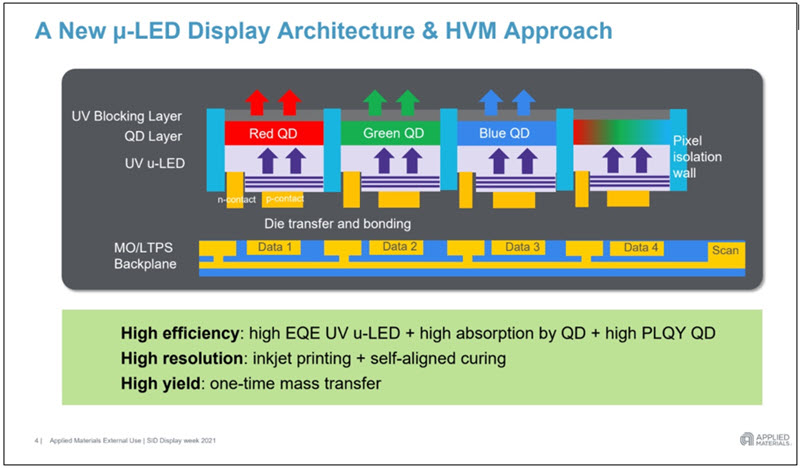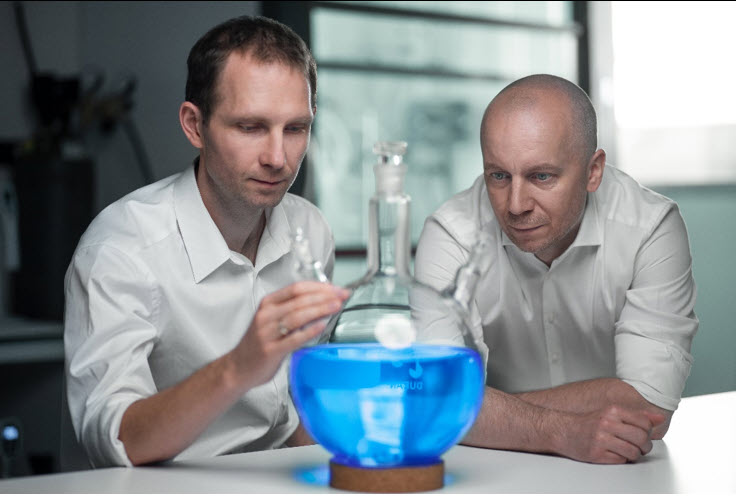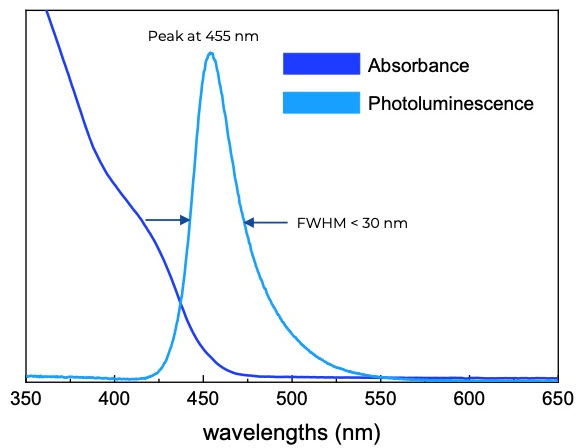From the SID conference this year, one really interesting theme emerged for me as rising in importance. That is the role of single emitter material systems for MicroLED.
Up to now, most display companies have emphasised discrete R, G, B systems for MicroLED demonstrators, whilst at the same time parallel tracking colour converting systems. This requires two different systems for MicroLED however, blue and green InGaN and red AlInGaAP. There are not many specialist suppliers of LEDs in both types of emitters (save for Osram perhaps). The use of two different material systems requires handling the mechanical and electrical performance of the different coloured emitters for an RGB display differently.
So the new rising theme is the idea of trying to use a single material system of emitters, which radically reduces the complexity of the transfer process (now you are transferring a single, and potentially more uniform emitter system) and could improve yield through greater simplicity. Both Porotech and AMAT have differing ideas about how to do this and arguably firms pursuing 3D GaN wire approaches (such as NS Nanotech) also are supporting mono-emitter theme, where the structure of the wire emitters leads to different colours.
Porotech is a UK start-up with technology from the University of Cambridge. Their notion is to use a tunable layer that allows colour to be modulated with current and PWM. But this is a single InGaN material system. Colleagues of mine have been impressed with this technology but the red emitter is still a little “orange” in hue for now and limited to smaller substrate sizes. This approach may also put some additional stress onto the backplane driving but is definitely a breakthrough idea.
AMAT has gone a different direction. Their proposal is to use a single UV LED and to then use colour conversion with photoluminescent QDs, for down conversion to red, green and blue pixels. (Applied Materials Overcomes Some Challenges in MicroLED for VR) This approach is particularly attractive as then there truly is a single LED material system and this simplifies transfer and material issues.
But this does need a blue QD colour conversion layer as well as the red and green quantum dot converters, which are established big businesses already. Blue is not typically a colour that has been required up to now. As AMAT are touting, the potential benefits of a UV-LED system with down conversion could be interesting in reducing mass transfer issues and also by reducing the differences in mechanical and electrical performance between different colour emitters.
However, Blue QDs Are Needed…
In the AMAT approach there is a very clear need for photoluminescent blue Quantum Dots to provide the blue emitter. However, the lack of market need to have blue photo luminescent QDs also means a relative lack of players looking into the specific chemistries for blue QDs. Nanosys and Florida-based Nanophotonica have been known to be working on blue emitters, and TCL and Sharp have also shown demonstrators and progress. The AMAT approach needs photoluminescent blue QDs and later, emissive QDEL (electroluminescent) displays would also need a class of mass-produced blue emitters from a competitive supply base with a number of players.
Enter the Polish
Enter QNA Technologies of Wroclaw, Poland. Their aim is to be one of a few main players taking the blue QD market very seriously both for photoluminescence QDs and also the blue QDEL market later. They have a flow-based R&D approach they have been developing since early 2018 and can already produce relatively large quantities of blue QDs-heavy metal free as the picture of the two senior founders below shows.
The technical path for such blue photoluminescent and electroluminescent dots has been established along paths of Zinc, Tellurium and Selenide by the few players pursuing blue dots. Blue QDEL materials, in particular, face the same meta-challenge that has faced phosphorescent OLED emitters, in that blue is the most difficult of the colours to deliver decent lifetimes. QNA’s initial results are already promising, with pretty decent FWHM (Full width half max, a measure of the breadth of the peak) and other spectral features shown below, especially if taking into account that their materials are being developed keeping in mind large scale and reproducibility as the priority.
QNA has put a lot of effort into the development of the surface engineering of the QDs to make sure their dots will be not only high quality, but also useful for their clients. QNA is developing a line of business developing QD inks for various customers, resists and photo-electro luminescent ink products. It’s nice to see a European player showing some of the sophisticated capabilities at ligand exchange needed to take QDs and make them functionally ink jet printable, for example, for real world applications.
The new theme is the potential disruptive role of mono-emitter systems in MicroLED technology: this will have implications for the development of a blue colour conversion layer material approach in some cases. Moreover, a commercial full QDEL system will also require a blue QD approach and as we have seen for both OLEDs and QDs, the blue materials are the most challenging (IH)
Thanks to QNA Technologies for moving this article outside the Display Daily paywall.




